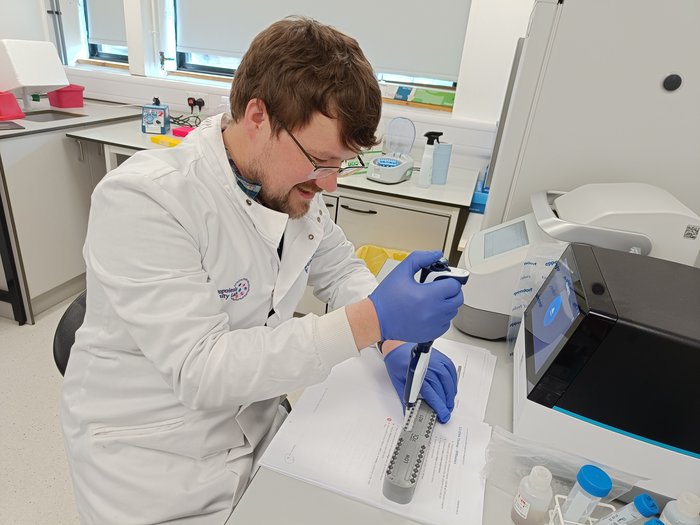Understanding the role of immune cells play following a bone marrow transplant
After a bone marrow transplant, donor’s immune cells attack cancer cells in the patient’s body called the graft-verses-leukaemia (GVL) effect. However, this treatment also has a risky side effect called graft-versus-host disease (GVHD). In both GVL and GVHD the immune system reacts in similar ways and Dr Right and his team want to understand more about this.

Dr Callum Wright
The challenge
Bone marrow transplants can be a way to cure some types of blood cancers. This is where healthy cells from a donor’s bone marrow (the spongy material inside some of our bones) replace a patient’s damaged unhealthy cells. This causes an incredible ‘cancer killing process’ where the donor's immune cells recognise and attack any remaining cancer cells in the body called the graft-verses-leukaemia (GVL) effect. Unfortunately, bone marrow transplants have a risky side effect called graft-versus-host disease (GVHD). This causes a ‘body attacking process’ where the donor’s immune cells (the "graft") mistakenly attack the patient’s body (the "host"), which can lead to serious and even life-threatening complications.
The project
In both GVL and GVHD the immune system reacts in similar ways and are caused by a particular type of white blood cell called T-cells. In this project, Dr Wright and his team want to investigate this further. They plan to examine the differences between T-cells causing the “cancer killing process” (GVL) and those causing the “body attacking process“ (GVHD). They will use exciting new technology that will allow them to look at these immune cells in detail to compare bone marrow samples. By understanding these differences researchers can use this information to help improve survival by improving the cancer killing process and reducing the body attacking process.
The future
It is hoped that this project could lead to further research and the development of drugs or treatments that will give those who have received a bone marrow transplant the best possible chance of survival. This research will also help increase our understanding of the way that the immune system attacks cancer cells and so could help us understand why cancer treatments work well for some people and not for others. This could lead to new insights into ways we could treat a wide range of blood cancers more effectively.
Funding
This project is part of the innovative pilot grant round.
